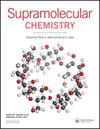超分子方法:8-羟基芘-1,3,6-三磺酸(HPTS)转运试验
IF 2.6
4区 化学
Q3 CHEMISTRY, MULTIDISCIPLINARY
引用次数: 10
摘要
脂质体膜转运试验,使用8-羟基芘-1,3,6-三磺酸来监测囊泡的内部pH值(HPTS试验),是一种广泛使用的技术,用于分析阴离子载体促进转运磷脂膜的活性。本文描述了进行这种运输试验的逐步技术,详细说明了使用这种方法来确定阴离子载体的活性和运输机制的优点和缺陷。图形抽象本文章由计算机程序翻译,如有差异,请以英文原文为准。
Supramolecular methods: the 8-hydroxypyrene-1,3,6-trisulfonic acid (HPTS) transport assay
ABSTRACT The liposomal membrane transport assay, which uses 8-hydroxypyrene-1,3,6-trisulfonic acid to monitor the internal pH of the vesicles (the HPTS assay), is a widely used technique for analysing the activity of anionophore-facilitated transport across a phospholipid membrane. This paper describes the stepwise technique to conduct this transport assay, detailing both the perks and pitfalls of using this method to determine the activity of an anionophore and the transport mechanism. GRAPHICAL ABSTRACT
求助全文
通过发布文献求助,成功后即可免费获取论文全文。
去求助
来源期刊

Supramolecular Chemistry
化学-化学综合
CiteScore
3.60
自引率
3.00%
发文量
5
审稿时长
2.7 months
期刊介绍:
Supramolecular Chemistry welcomes manuscripts from the fields and sub-disciplines related to supramolecular chemistry and non-covalent interactions. From host-guest chemistry, self-assembly and systems chemistry, through materials chemistry and biochemical systems, we interpret supramolecular chemistry in the broadest possible sense. Interdisciplinary manuscripts are particularly encouraged. Manuscript types include: high priority communications; full papers; reviews, and; Methods papers, techniques tutorials highlighting procedures and technologies that are important to the field. We aim to publish papers in a timely fashion and as soon as a paper has been accepted and typeset it will be published in electronic form on the Latest articles section of the website. The two most important review criteria are that the paper presents high-quality work that fits generally into the broad spectrum of activities in the supramolecular chemistry field. Under normal circumstances, Supramolecular Chemistry does not consider manuscripts that would be more suitable in a highly specialized journal. This includes, but is not limited to, those based mostly or exclusively on topics such as solid state/X-ray structures, computational chemistry, or electrochemistry. .
The two most important review criteria are that the paper presents high-quality work that fits generally into the broad spectrum of activities in the supramolecular chemistry field.
 求助内容:
求助内容: 应助结果提醒方式:
应助结果提醒方式:


